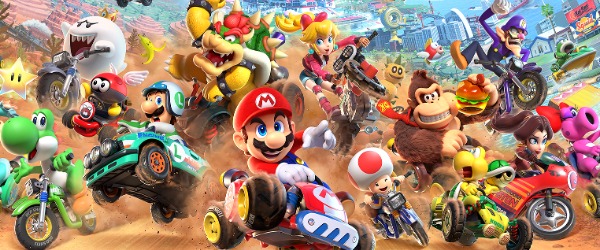Iconoclasts (PSV) - Review
by Evan Norris , posted on 28 January 2018 / 8,196 ViewsFor seven years, Joakim Sandberg worked on Iconoclasts, an action-platformer with a heavy focus on story and character development. Sandberg's commitment to the project was worth the long wait; Iconoclasts is a strong entry in the genre, with refined mechanics, cleverly-designed puzzles and boss battles, and a nuanced, realistic narrative that puts most video game stories to shame.
The game follows Robin, a young mechanic who helps out her neighbors with home repairs. Robin is an unauthorized mechanic, however, commiting acts of altruism against the strict law of Iconoclasts' theocratic government, the One Concern, which issues career assignments based on need and which has fostered a growing gulf between the haves, who live in an idyllic capital city, and the have-nots, who fend for themselves in the countryside. When Robin's illicit activities are discovered by Agents, members of a super-powered secret police force, her entire world is thrown upside-down. As she escapes from Agents, and from religious and military authorities, she discovers secrets that threaten the entire world.
![]()
If you are at all interested in video game narrative, Iconoclasts is unmissable. It's something of a master class in dystopian story-telling, complete with analogies to current political issues: fascism, the role of religion in society, environmental sustainability, etc. Most impressively, its characters are not types. There is no faultless hero or rotten villain in this game. Each character has his or her own sets of virtues and vices, and even those on the "good" side act violently, impulsively, and selfishly.
Gratefully, the stellar story doesn't overstay its welcome, and yields most of its time to the player — great news, as the game's mechanics are almost as impressive as its narrative. Iconoclasts is a 2D side-scrolling action-platformer in the Metroid tradition, with gameplay divided into three main categories: exploration, puzzle-solving, and combat. All three phases of the game are polished and engaging, although some are more impressive than others.
![]()
Let's start with exploration. Because of its focus on story-telling, Iconoclasts is more straightforward and linear than many titles under the "Metroidvania" banner. The game has the requisite number of gated-off chambers and items that must be re-visited with the proper gear, but Sandberg never compels you to backtrack. All the essential goodies are laid out on the track in front of you, with only treasure chests containing crafting materials left behind in those hard-to-reach spots. Rarely are you encouraged to clear a map or find a treasure chest. In a traditional Metroidvania, getting 100% is part of the fun. Here, it's an after-thought.
This is partly the case because the materials found in hidden chests aren't particularly useful. Players can use them at workbenches to craft "tweaks" — small bonuses to health, speed, or Robin's signature wrench — but none of these bonuses are game-changers. You'll be able to best the entire game without any of them. It's an unfortunately limited and under-cooked feature.
![]()
In terms of puzzle-solving and combat, Iconoclasts is more impressive. Puzzles make clever uses of Robin's abilities and tool set, setting up situations where the magnanimous mechanic must move blocks, manipulate bolts, and fire electrified grenades to unlock the way forward. A stun gun modification earned late in the game allows Robin to switch places with certain objects and enemies, creating even more complex puzzles. The wrench and stun gun, so useful in solving problems, double as our heroine's arsenal. Using them, Robin can deflect enemy projectiles and knock out enemy troops. Regrettably, fighting with the rank-and-file of the One Concern is never as enjoyable as it should be.
The opposite holds true of battles with Iconoclasts' 20-plus bosses. Where fights with regular troops are random and jumpy, boss battles are finely-tuned, ordered engagements that demand a healthy mix of physical and mental exertion. There's a clash with a burrowing mechanical worm, where Robin must escape a giant saw blade by riding an electrified rail; a close-quarters showdown with a shielded gunslinger in which she needs to swap places and lure the cowboy into a trap; and, best of all, a tag-team match where players swap back and forth between Robin and friend Mina to destroy an out-of-control generator. There's even a slow-burning stealth boss encounter that feels like a 2D homage to Metal Gear Solid 3.
![]()
On the artistic side of things, Iconoclasts scores well. There is an abundance of pixel-art platformers on the market today, many of them indistinguishable from one another, but Sandberg's game stands out. Interesting art direction, robust backgrounds, and, most of all, surprisingly-detailed animations give this game a look and feel all its own. Sandberg also plays around with word bubbles, often overlapping conversations and modifying the font height and intensity of certain words and sentences. There's a physical personality to the dialogue in Iconoclasts.
If you're looking for a pure, traditional Metroidvania, this isn't it. If you're more in the mood for a smart action-platformer with terrific boss battles and a complicated, morally-ambiguous storyline, then you've come to the right place. The game's perk system is half-baked and its regular combat unengaging, but its puzzles, bosses, and refreshingly-flawed cast of characters more than make up for those misses.
VGChartz Verdict
7
Good
This review is based on a digital copy of Iconoclasts for the PSV, provided by the publisher.






























 Essay Pro
Essay Pro